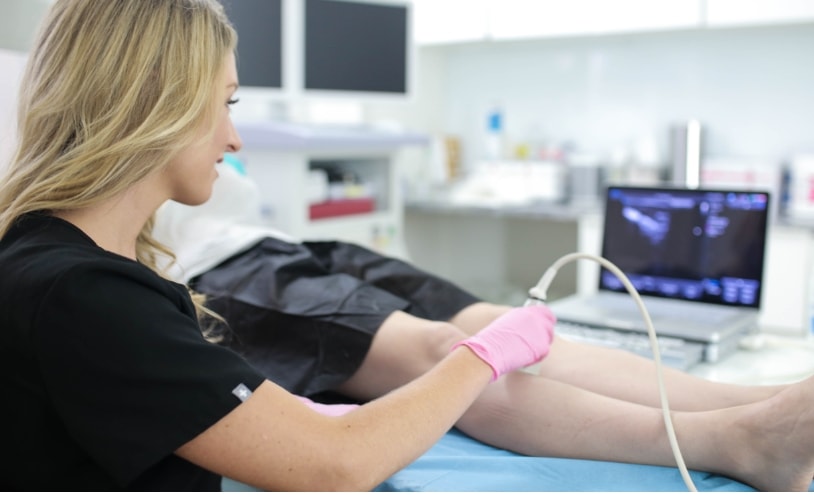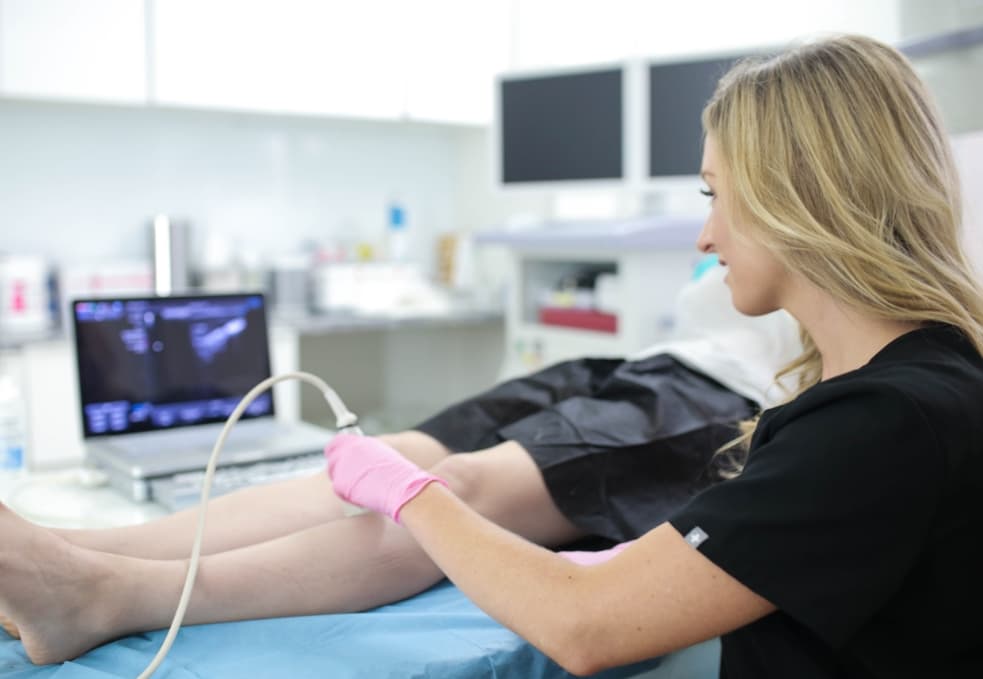What is a vein center?
A vein center is a medical center specializing in the prevention, diagnosis, and treatment of vein problems. A medical center for vein treatment in Long Island is led by highly-skilled and reliable vein doctors specializing in cutting-edge minimally invasive treatments for spider veins, varicose veins, chronic venous insufficiency, and all other vein problems. When you consult a vein doctor at a vein center, you can expect a thorough evaluation of your health and leg veins, following which they perform a duplex ultrasound for vein mapping, a diagnostic procedure that helps them identify the root cause of your vein problems.
If you have spider veins, varicose veins, or other signs and symptoms of vein disease, we encourage you to visit our medical center for vein treatment in Long Island. Our state-of-the-art medical centers for vein treatment are led by board-certified and Harvard-educated vein doctors specializing in cutting-edge ultrasound-guided minimally invasive treatments for the root cause of vein problems. Instead of simply addressing the superficial symptoms, we identify and treat the root cause of your vein problems. We also avoid complex surgical procedures, such as vein stripping. Please schedule an appointment at our centers for vein treatment in Long Island.

What do you wear to a vein consultation?
During your vein consultation, you should wear loose-fitting clothes that you can easily pull back to reveal the areas that need to be treated. The vein doctor will examine your leg veins, so you’ll have to reveal the areas with spider veins and varicose veins. You will also have to wear compression stockings after your vein treatment, and tight clothes will make compression stockings uncomfortable. You should especially avoid wearing tight clothing on the legs, such as skin-tight jeans. Loose, flowing dresses are ideal for a vein consultation.
What can I expect from a vein map?
Vein mapping is a diagnostic process that allows vein doctors to diagnose the root cause of your vein problems. Most vein diseases, including spider veins and varicose veins, are caused by underlying chronic venous insufficiency, a dangerous medical condition that leads to blood accumulation in leg veins. If the vein doctor treats spider veins without addressing the root cause, your spider veins might return. That’s why vein mapping is essential — the vein doctor can identify all the anomalies and obstructions in your venous system and curate a personalized treatment plan.
Our centers for vein treatment in Long Island perform vein mapping using the duplex ultrasound system. During the vein mapping procedure, the ultrasound technician will apply a gel-like substance to your legs, following which the handheld transducer will be moved to the targeted areas. The device will release ultrasound energy to visualize the internal structures of your venous system on a computer screen. The vein doctor will interpret the results of the vein map to identify if you have chronic venous insufficiency. The entire duplex ultrasound should conclude within 30 to 60 minutes.
Is vein mapping painful?
Vein mapping with duplex ultrasound is a non-invasive and painless procedure that reveals abnormalities in the veins. There is absolutely no pain or discomfort during or after the vein mapping session. At most, you might feel a little cold when the clear gel is applied to your skin.
How long does vein mapping take?
Vein mapping with duplex ultrasound usually takes 30 to 60 minutes, depending on your unique condition. The vein doctor will assess your entire venous network, usually from the ankle to your groins or your arms to the neck, depending on the location of your vein disease symptoms.
What is a vein cluster?
A vein cluster, also known as spider veins or telangiectasis, is a dense cluster of damaged blood vessels located just underneath the skin’s surface, usually on the lower extremities, such as the ankles, calves, thighs, and buttocks. You can also find vein clusters on the face. The presence of a vein cluster indicates that you may have underlying vein problems, such as chronic venous insufficiency.
What is a shot in the vein called?
A shot in the vein is called sclerotherapy, and it’s one of the most effective minimally invasive treatments for spider veins and small varicose veins. Sclerotherapy involves injecting a sclerosant medicine into the spider veins to irritate their vein walls and turn them into hardened scar tissues that are eventually metabolized by the body. The spider veins eventually fade away from the skin’s surface within a few weeks.
What happens if you don’t wear compression stockings after sclerotherapy?
Compression stockings are skin-tight garments that prevent blood from accumulating in the leg veins. You must wear compression stockings after sclerotherapy to prevent blood from accumulating in the leg veins, reduce swelling, and prevent harsh side effects, such as brownish discoloration and hyperpigmentation. If you don’t wear compression stockings, you increase your risk of complications.
Is sclerotherapy considered surgery?
Sclerotherapy is a non-surgical, minimally invasive treatment that only involves a few careful injections into the targeted spider veins. The vein doctor will use one injection per spider vein, so the total number of injections will depend on your unique condition. But there are no major excisions, hospitalization, or downtime.
Is vein ablation painful?
Vein ablation is a minimally invasive procedure for chronic venous insufficiency, the root cause of most vein diseases. The vein ablation procedure involves using thermal energy or laser energy to destroy the diseased vein responsible for your vein problems, rerouting the accumulated blood into healthier leg veins. The procedure is painless and comfortable because it’s performed under local anesthesia, and there are no harsh side effects or major complications.
